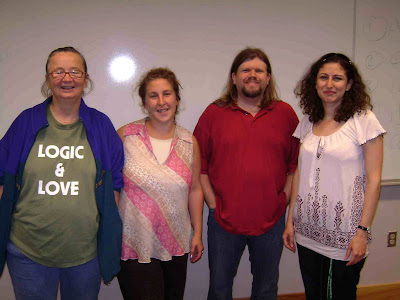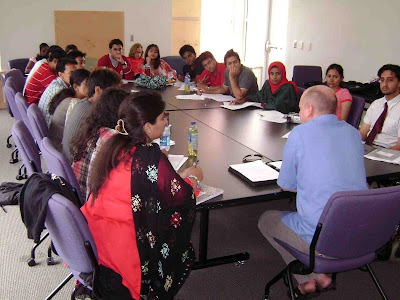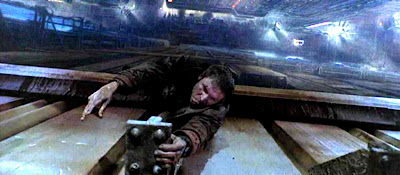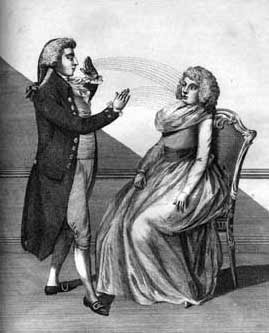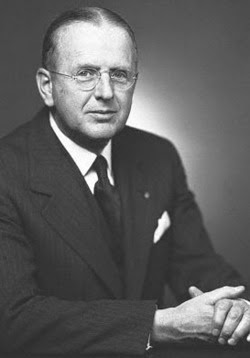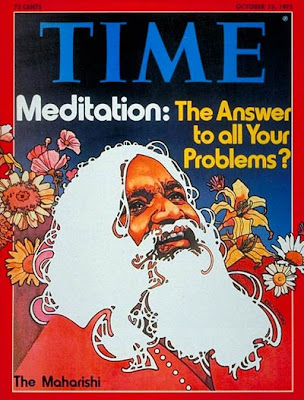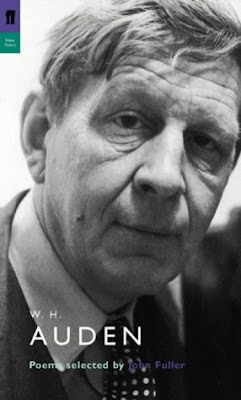When you were little, assuming you had a two parent family, who did you go to when you were hurt or when you needed something? If you didn't grow up in such a family take a family from Tv such as the Cosby Show, Leave It to Beaver or even the Foreman's of That Seventies Show.
When one of the children need to speak to a parent who do they speak to? Is it the father or mother exclusivly? Nope...not even in the father-led, 1950's Cleavers, sometimes "the Beave" went to his mom and sometimes to his Dad and recieved different advice from both, and different comfort from both.
So as the literal children of Heavenly Mother and Father whom do we go to when we need something, or when we need comfort? Does it not seem out of balance to always go to the Father - to always seeks only guidance and assuarance from the masculin side of the Divine?
In D&C 88:119 we are told to "Organize yourselves; prepare every needful thing; and establish a house, even a house of prayer..." So praying should be like a house. We are the children asking for love and understanding from our parents so why always go to the father for that? Why never the Mother?
Psalm 123 tells us that prayer should be like a servant to his master. The master rules the house and the servant looks to the master for guidance just as we look to God for guidance in our "house" in which we serve Him. But it doesn't stop there. Psalm 123 actually says, "Lift up thine eyes unto the Lord and plead with him for mercy. Unto thee lift up mine eyes, O thou that dwellest in the heavens. Behold, as the eyes of servants look unto the hand of their masters, and as the eyes of a maiden unto the hand of her mistress; so our eyes wait upon the Lord our God, until that he have mercy upon us (Mollenkott).
God is both our Master and our Mistress, our Mother and our Father and we seek the direction and compassion of both just as we serve both. Should we then not be praying to both? Should we not seek out the Mother for motherly things and the Father for Fatherly things?
After Joseph Smith revealed the concept of Mother in Heaven to Eliza Snow, one of his wives, she was moved to write the Mormon hymn now called, “O My Father!” This hymn was originally called “Eternal Mother and Father”
President Wilford Woodruff, the fourth President and Prophet of the LDS church said that “O My Father” was a hymn of revelation given to Snow.
Let me repeat that, a revelation, given by a woman about Mother in Heaven, a prophet said this. So what does her revelation say?
"I had learned to call thee Father, Through thy Spirit from on high,
But until the key of knowledge Was restored, I knew not why.
In the heavens are parents single? No, the thought makes reason stare!
Truth is reason, truth eternal Tells me I've a mother there."
Let's break it down a bit further. "I had learned to call thee Father" When do we call upon God? In prayer of course! The keys of knowledge were restored through Joseph Smith Jr. and now Eliza (and all of us) know that in the context of calling upon God we have also a Mother in Heaven!
"But didn't President Hinckely tell us not to pray to Mother in Heaven?" I hear you asking through cyber space. Well, no, not exactly. So what did Hinckely say exactly? Here's the most important piece, “in light of the instruction we have received from the Lord Himself, I regard it as inappropriate for anyone in the Church to pray to our Mother in Heaven.” He went on to say that those who prayed to Heavenly Mother are, "well-meaning, but they are misguided.”
Some key words here are "I view it" and it is "inappropriate" but not outright appostesy. At no time does Hinckely say God said not too. No it's more missguided. But Hinckely did not say these famous words as the Prophet, he was not yet the prophet when he said them. So how much weight do they carry?
Should we head the words of Wilford who was a Prophet when he said that Eliza's hymn was a revelation? Do we listen to scripture that says prayer should be like a house, where we all understand that even in the most patriarchal socieities the Mother is a source of knowledge and comfort at some point too? Or do we choose to listen to Hinckely and his talk of missguideness?
I suppose the choice is yours. Red pill or blue pill?



